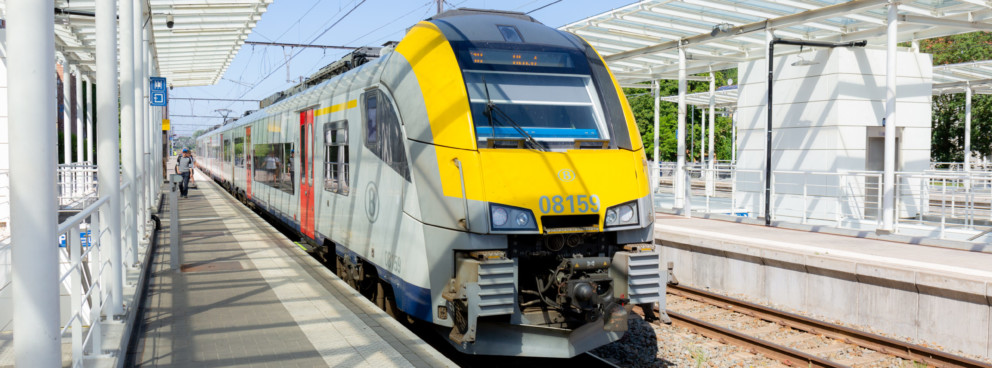Pilot projects tendering train services in Belgium
The question asked by the Belgian Federal Public Service Mobility and Transport
The question we were asked by the Belgian Federal Public Service Mobility and Transport was to formulate scenarios to open the market for passenger rail transport services to competition from a unimodal or multimodal perspective (including or not including infrastructural aspects), while respecting existing federal competences. Two objectives were central:
- To develop relevant transitional and organisational scenarios (including the identification of constraints and phases in the process, as well as possible coordination requirements between actors) to guide the public authorities in their choices and, on that basis, to develop the appropriate legal framework, which meets European requirements;
- Identify suitable networks for the pilot projects, taking into account their technical and operational feasibility.
The report was to help prepare for the decision-making process in developing a market organisation best suited to the Belgian context. The report was to identify concrete measures, which would enable pilot projects as part of the work to open up the market, and to meet the government’s objectives.
Our approach
We chose a three-phase approach to carry out this assignment, with several discussion and design workshops, in which the Federal Public Service Mobility and Transport also participated:
- In a first phase, based on a broad exploration of the field of scenario configurations, the main elements of the problem were recalled and summarised to outline, in collaboration with the Fedeeral Public Service Mobility and Transport, the first contours of the possible scenarios.
- In a second phase, several possible implementation options were proposed, discussed and adapted to the Belgian context. This phase resulted in the concrete formulation of plausible scenarios covering the requested scope. These results are summarised in the report and accompanied by a presentation of the legal, organisational, contractual and time constraints associated with their implementation.
- In a third phase of the study, a list of potential pilot projects was drawn up on the basis of the above, taking into account the characteristics of the grid and associated constraints.
The result
Some concluding remarks from the report:
- The various options, as formulated in the report, can be considered with regard to rolling stock positioning, staffing, information and sales. These choices do not depend on the choices to be made regarding multimodal coordination. These choices depend mainly on the local context of the pilot project. This also applies to the integration of infrastructure management (stations and/or tracks) in a scenario.
- In principle, the issue of multimodal coordination can be ‘separated’ from the procurement of pilot projects. The different ways of coordinating rail and multimodal supply thus define three main scenarios (unimodal, multimodal project and multimodal concession).
- Regardless of which scenario is chosen, the introduction of the pilot projects will inevitably lead to a situation where several public passenger rail service contracts coexist. This will lead to a number of ‘inter-rail’ coordination requirements to ensure – in line with federal transport policy objectives – the attractiveness of the rail system through integrated service design. This will also be the case in operational implementation (connections and passenger information during disruptions) and in the coordination of investments between infrastructure and trains.
- Setting up the pilot projects will require several adjustments in legislation, governance and contracts. Different legal deadlines must also be respected for tendering train services. On top of this, there are a number of practical requirements. In general, a four-year period is required between first announcement and start of operation. This means that a ‘simple’ pilot project cannot become operational before 2031 (or 2033 in case of equipment purchase and/or workshop construction). In principle, the addition of multimodal coordination (‘multimodal project’), if implemented simultaneously with the legislative changes required at the federal level, should not lead to further delays. In contrast, more time should be provided for a ‘multimodal concession’. The addition of an ‘infrastructure’ variant would probably require a longer period, but would not substantially delay the start. However, completion of infrastructure works is likely to occur at the earliest two years after operation start (2033 or later).
- These timeframes are based on several relatively ‘optimistic’ assumptions about the length of the decision-making and legislative process, and about the duration and possible difficulties of transition (transfer of assets, obtaining data, revision of contracts, etc.). Various intangible factors may also lead to longer timescales than those mentioned above. This would bring the start of the pilot projects even closer to the end date of the historical operator’s service contract (end 2032).
- A retro planning regarding a tender for SNCB’s public service contract expiring at the end of 2032 shows that the start of this procedure would have to take place in 2028-2029 at the latest, i.e. very soon after the start of the procedures designed for the pilot projects. This will prevent it from benefiting from the lessons learned from the pilot projects. It also shows that the legislative changes to be made from 2025 onwards should immediately be those required for rail reform and the introduction of calls for competition in general, not just for the pilot projects.
The resulting report has been published by the FPS Mobility and Transport (NL / FR).
This project was conducted under the leadership of inno-V, in collaboration with Trans-Missions and KCW.
